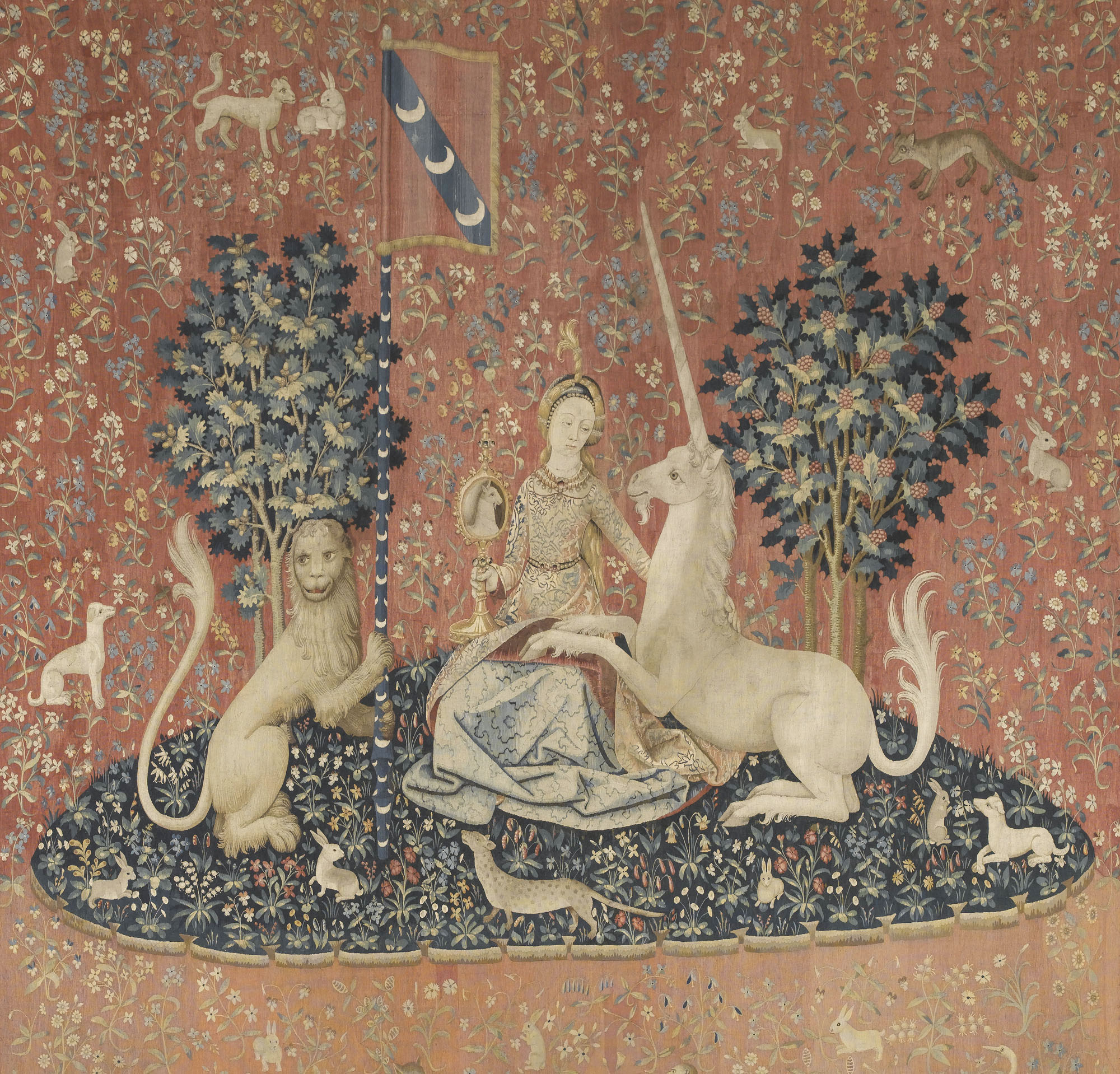The Western model of sexual equality — one that drives women to focus on careers but also contributes to lower birthrates — may not be an entirely unmixed blessing, but the roots of the West's gender attitudes run deep and stem from some interesting places, as "The Lady and the Unicorn" exhibition at The National Art Center, Tokyo shows.
The centerpiece is a series of six enormous, 15th-century tapestries from Paris' Musée de Cluny, all displayed in a large central gallery. Each one features the lady and mythical horned creature of the title, as well as a lion.
Both these creatures have a deeply symbolic meaning: the unicorn standing for purity and grace and the lion for nobility. The appearance of such heraldic beasts immediately puts the viewer in mind of the age of chivalry and romance associated with medieval Europe. This was a courtly culture, where the veneration of the right kind of lady served as a focus for knights to develop their less martial virtues, such as gentleness, courtesy, chastity, and cultural refinement.


















With your current subscription plan you can comment on stories. However, before writing your first comment, please create a display name in the Profile section of your subscriber account page.